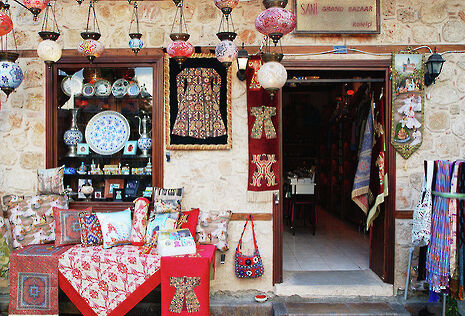Clutter, culture and consumerism: why we have so much stuff
Emma Toms asks why we find it so hard to declutter – and why she bought washi tape, rainbow bunting, and an octopus finger from Tiger

During a stroll around town back in Freshers’ Week, my new friends introduced me to the concept of Tiger. Within an hour, I was the proud owner of many useless quirky and, I like to think, tasteful pieces of decor, including rainbow bunting, several rolls of washi tape, a movie clapboard, and a plastic octopus finger (in my defence, there was some sea-themed club event coming up and we all thought it would be funny to get them in an iconic act of fresher solidarity).
I am not the only one familiar with accumulating clutter: anyone who’s gone through an essay crisis understands how easy it is to let stuff pile up without a coherent organisational system, and anyone who’s been on holiday has at least been tempted by the gift shops they pass. But some people are able to resist these temptations and live a Pinterest-worthy minimalist lifestyle – this, I am fully impressed by, and maybe even envy a little. So why is it so hard for some to declutter their lives? Why do we keep and buy things we know we’ll probably never actually need?
Part of the reason for this stems from our desire to express ourselves, or rather, the ways in which we fulfil our needs for self-expression. Whether it’s through creating a room which, quite literally, glows with your personality, or through switching up your look with new clothes, ‘aesthetic’ is an important part of 21st-century culture. The images we present of ourselves serve as an important physical tool in allowing us to explore and express our identity and personality, culturally, politically, or otherwise.
“To get an edge over their competitors, products are not just advertised as convenient and time- or energy-saving, but as essential and even as something you couldn’t achieve happiness without”
However, this desire to hit a perfect aesthetic feeds into the very real ‘never-wear-something-more-than-once’ mentality, despite efforts to introduce sustainable fashion: people still purchase new outfits with a view to wear them on only one or two occasions, or buy things similar to what they already own because the slight differences ‘can make a whole new outfit’ – or so I’ve been told by people with five monochrome striped shirts.
Even more interestingly, some buy items they might hope to use but never do, simply because of the rush of happiness they get from indulging themselves. We are in the age of treating your self, and impulse buying as a result is seen not as a waste but as a reward, a convenient and achievable source of happiness in the business of our day-to-day lives – effectively a quick fix when our motivation is down after spending hours in a library.
This is something that a number of companies have picked up on in their advertising. To get an edge over their competitors, products are not just advertised as convenient and time- or energy-saving, but as essential and even as something you couldn’t achieve happiness without. In our relatively consumerist culture, materialistic values – however latent or imperceptible – rule.
Advertisements feed into this by creating an image of attachment between person and product: whether it is a wholly new and innovative product, like when smartphones first broke into the market, or something which has been a staple in homes for years, advertisers work to convince you that you will regret not having their products, no matter how trivial their impact is on your life. This plays off not just the feeling that you need them now, urgently and almost impulsively, but that you deserve them to make you happy – and who doesn’t deserve to be happy?
Of course, while this all makes it easy to collect clutter, it is not inescapable. Although I never think I’ll achieve the level of chic and sparseness in my space to be worthy of being featured on any minimalist blog, even I have managed to cut back on the amount of stuff I keep stored away in the belief that I just might need it again. Simply by finding the time to have small clearing-out sessions in your room once a week, or thinking of ways to reuse what you already have, or just stopping a minute before you reach the till to ask yourself how often you are actually going to use your chosen product, we can shift our focus away from the material back to what’s more important. Cheese alert – there’s some truth in the saying that money can’t buy happiness, and the best things in life really are free
 Features / Should I stay or should I go? Cambridge students and alumni reflect on how their memories stay with them15 December 2025
Features / Should I stay or should I go? Cambridge students and alumni reflect on how their memories stay with them15 December 2025 News / Cambridge study finds students learn better with notes than AI13 December 2025
News / Cambridge study finds students learn better with notes than AI13 December 2025 Comment / The magic of an eight-week term15 December 2025
Comment / The magic of an eight-week term15 December 2025 News / Uni Scout and Guide Club affirms trans inclusion 12 December 2025
News / Uni Scout and Guide Club affirms trans inclusion 12 December 2025 News / News In Brief: Michaelmas marriages, monogamous mammals, and messaging manipulation15 December 2025
News / News In Brief: Michaelmas marriages, monogamous mammals, and messaging manipulation15 December 2025









